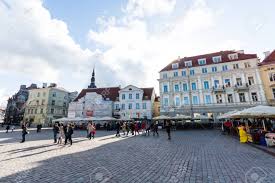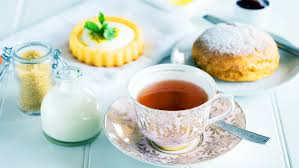Tallin, Tarts & Trolls

 Tallinn, Estonia’s capital on the Baltic Sea, is the country’s cultural hub. It retains its walled, cobblestoned Old Town, home to cafes and shops, as well as Kiek in de Kök, a 15th-century defensive tower. Its Gothic Town Hall, built in the 13th century and with a 64m-high tower, sits in historic Tallinn’s main square. St. Nicholas Church is a 13th-century landmark exhibiting ecclesiastical art.
Tallinn, Estonia’s capital on the Baltic Sea, is the country’s cultural hub. It retains its walled, cobblestoned Old Town, home to cafes and shops, as well as Kiek in de Kök, a 15th-century defensive tower. Its Gothic Town Hall, built in the 13th century and with a 64m-high tower, sits in historic Tallinn’s main square. St. Nicholas Church is a 13th-century landmark exhibiting ecclesiastical art.
Tallinn is a proud European capital with an allure all of its own. It is lively yet peaceful, absurdly photogenic and bursting with wonderful sights including ancient churches, medieval streetscapes and noble merchants’ houses. Throw in delightful food and vibrant modern culture and it’s no wonder Tallinn seems in danger of being loved to death,  especially after a few cruise ships dock. But it’s one of those blessed places that seems to cope with all the attention.
especially after a few cruise ships dock. But it’s one of those blessed places that seems to cope with all the attention.
Despite the boom of 21st-century development, Tallinn safeguards the fairy-tale charms of its Unesco-listed Old Town – one of Europe’s most complete walled cities. The city clearly realises it’s better to be classy than brassy. Hence the blossoming of first-rate restaurants, atmospheric hotels and a well-oiled tourist machine that makes visiting a breeze.
Tarts
Afternoon tea has many traditions and romantic associations, plus particular etiquette that is expected during tea time. While tea drinking has been recorded for thousands of years in various cultures, afternoon tea is specifically tied to British heritage in origin and fulfilment. Afternoon tea was introduced in early Victorian times when most households ate only two meals per day – one in the morning and the other in the early evening. According to history, the Duchess of Bedford would feel fatigue around 4:00 p.m. in the afternoon and would request sandwiches, cookies or a muffin to hold her over until dinner. Soon after, invitations to her aristocrat friends were sent and the trend was quickly set.
 Today there are many cruise lines that take their on-board afternoon tea very seriously. Afternoon tea is an institution that harks right back to the earliest beginnings of cruise holidays, when luxury voyages were little more than straightforward ocean crossings from one port to another. The tradition of afternoon tea followed the upper classes aboard ocean liners, and even after these crossings had grown into the cruises we know today, the tradition for afternoon tea endured as a passenger favourite.
Today there are many cruise lines that take their on-board afternoon tea very seriously. Afternoon tea is an institution that harks right back to the earliest beginnings of cruise holidays, when luxury voyages were little more than straightforward ocean crossings from one port to another. The tradition of afternoon tea followed the upper classes aboard ocean liners, and even after these crossings had grown into the cruises we know today, the tradition for afternoon tea endured as a passenger favourite.
It is more than just a great British Tradition, it is has also become a cruise ship tradition and is very popular, especially on sea days. Expect a mixture of finger sandwiches and filled rolls, followed by tarts, cakes, cookies and excellent scones, warm and crumbly, with jam and individual pots of clotted cream.
Trolls
If you’ve ever been to Norway then chances are you’ve seen a troll or maybe a dozen. Travellers visiting Norway might have noticed various Norwegian trolls in their wanderings be it by references, imagery or names. The Trollstigen mountain pass, the Trolltunga rock formation and the Trold-Tindterne peaks are all natural sites in Norway named after their strange national creature. But legends of trolls have been told in Norway for centuries, and some of the stories are wonderfully interesting which is why we all love them so much.
 One tale tells of Askeladden, the youngest son of a farmer who needed wood from the forest to pay off his debts. When his first two sons went into the forest and returned empty handed – having been scared away by the troll – Askeladden went into the forest with a piece of cheese to keep him from starving.
One tale tells of Askeladden, the youngest son of a farmer who needed wood from the forest to pay off his debts. When his first two sons went into the forest and returned empty handed – having been scared away by the troll – Askeladden went into the forest with a piece of cheese to keep him from starving.
When he encountered the angry troll, Askeladden pulled out the piece of cheese and, pretending it was a rock, squeezed it until the whey came out. Thus, the troll was fooled and, fearing his great strength, offered to help the boy with his wood cutting.
After working hard, the troll invited the boy back to his home for a meal. As he was tending the fire, he pointed to two huge buckets and asked the boy to fetch water. The boy realised that he couldn’t carry such massive buckets, let alone filled with water, so he claimed they were too small and that he would simply bring the whole spring instead.
The troll obviously didn’t want a whole spring in his house and so they exchanged chores.  The boy tended the fire while the troll went to get water to make porridge. Once it was ready the boy suggested they have an eating contest. They ate as much as they could, however the boy had placed his knapsack under his shirt and was filling it with the porridge, without the troll noticing. Once it was full he slashed a hole in it and continued to eat.
The boy tended the fire while the troll went to get water to make porridge. Once it was ready the boy suggested they have an eating contest. They ate as much as they could, however the boy had placed his knapsack under his shirt and was filling it with the porridge, without the troll noticing. Once it was full he slashed a hole in it and continued to eat.
Once the troll was full and could eat no more, the boy suggested that the troll cut a hole in his stomach, like they boy appeared to have done, so that he could eat as much as he liked. The troll, being rather stupid, did so and promptly died. Thus, the boy took all of his gold and silver and the farmer could pay off his debts.
Other ways of driving out trolls
If you can’t get the better of a troll in an eating contest, then the best way is to ring church bells. As un-Christian beings, trolls are said to go crazy when they hear the bells and run far away. Trolls are also repelled by lightning, which kills them. Some legends attest that trolls turn to stone when exposed to sunlight and that this is the source of the huge stony crags in places such as Trold-Tindterne (Troll Peaks) in Norway.
No matter what type of troll you encounter, you now know that all you need to do is keep your wits about you, keep a knapsack full of cheese, and hope there’s some church bells around!

